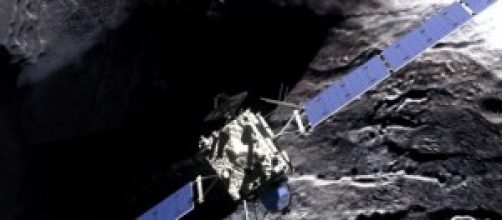Wednesday 12th November 2014. This is the date NASA hopes to land an scientific probe on a comet for the first time in history. The mission named Rosetta will attempt to land a probe named Philae on the surface of a comet named 67p Churyumov Gerasimenko.
In March 2004 NASA launched Rosetta mission into space. They fired a spacecraft that houses its main instruments in a box just 2.8m x 2.1m x 2.0m and two solar panels at each side stretching only 14m, Its total wingspan just 32 metres. This spacecraft also has a landing probe called Philae. The main craft has 11 instruments.
ALICE. miniaturized ultraviolet imaging spectrometer.
OSIRIS. Imaging.
VIRTIS and MIRO. both again used for imaging.
Composition analysis tools: Rosina, Cosima, Midas
Nucleus large- scale structure: Concert
Dust flux and mass distribution: Giada
Amongst many other pieces of technology that will show us in depth what the comet looks like and the changes it goes through the closer and further away the comet gets from the sun.
Their aim is to catch the speeding comet land Philae on the actual comet and bring back data that may show us how the earth was created.
As The comet is so old its make up may show us some insight into what created our world we live in, and may even hold some of the building blocks, the essential building blocks of life as we know it.
To even have a chance of ever catching the comet Rosetta over a period of years from 2004 to November 2009 had to under go 3 gravity assist to reach the speed needed. Gravity assist is where the spacecraft flies close enough to a planet or orbital body so that is is affected by its gravitational energy and therefore speeds up.
However in July 2011 NASA needed to conserve energy, so they could even make the long journey to the comet needed so they placed the spacecraft into hibernation. Turning off the thrusters and all electrical equipment. It was left in this state for just under three long years waking up in January 2014. The spacecraft itself looked to have failed and could not be retrieved, Nasa searched using a huge radio dish that being the 70m dish in California named Goldstone, Finally the signal came, Rosetta was on and in good shape.
In March 2014 the first pictures from the 4 mega pixel camera Osiris would flood back to earth, and the countdown to landing the probe would begin. Incredible this camera- which is less than that in most cell phones has shown in incredible detail, cliffs, huge ice fountains, and boulders littering its surface, the challenge? Finding a clean ground to land. After much deliberation in Germany, the mission control centre at the European space Agency (ESA).
Now we must wait till Wednesday to find out if this whole mission has been for nothing. If the probe misses its small landing spot the craft could tip over and that means it is lost. If successful, this will be the most daring mission ever completed and the world of possibilities opens for scientific advances.
Scientists believe that comets can have particles in them that will show how our sun was created, and planets, and even how life began. This comet is a huge ball of rock and ice, and scientists know that the closer it gets to the sun the ice will melt, and where there is water there could be some form of mycobacterial life, the building blocks of how we began.
Wednesday is the biggest day in recent science history, Lets hope Houston doesn't have a problem!

